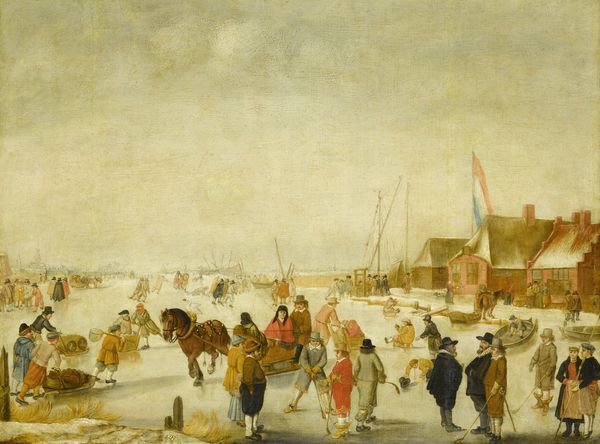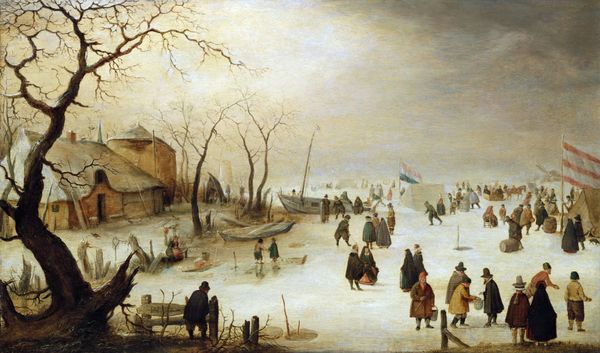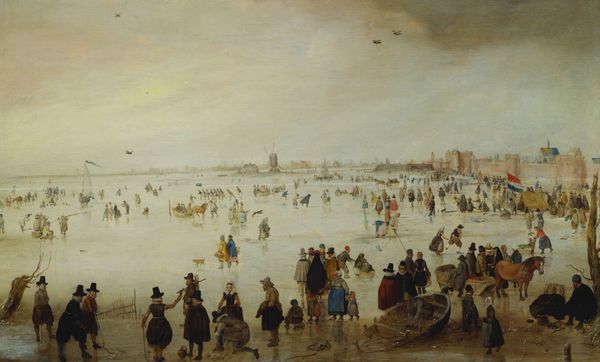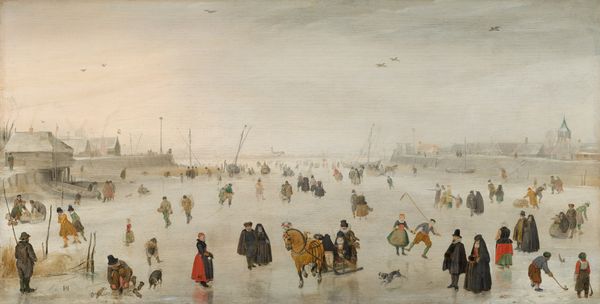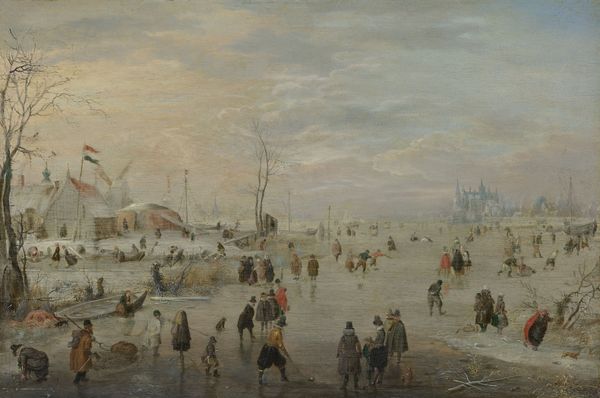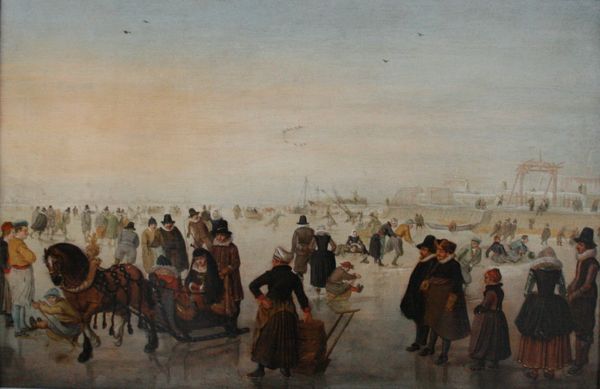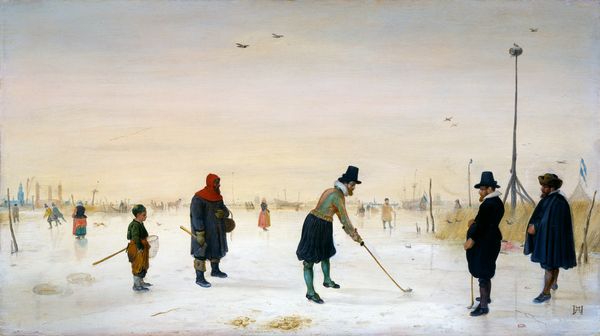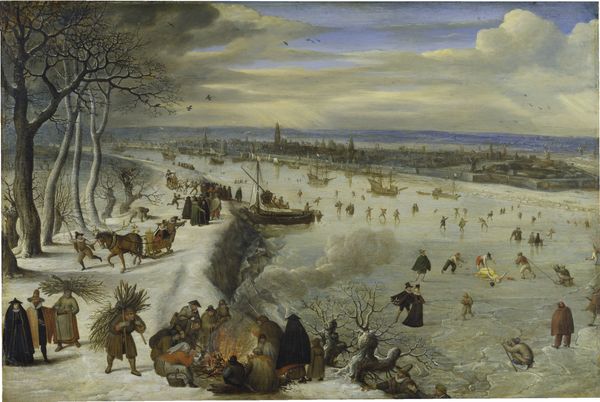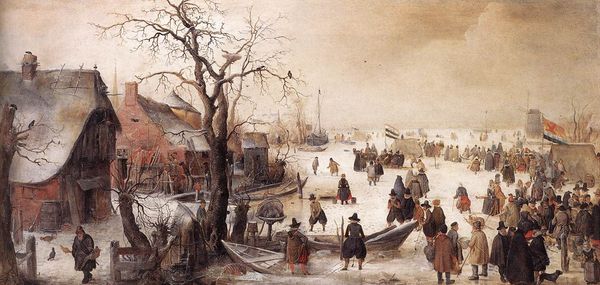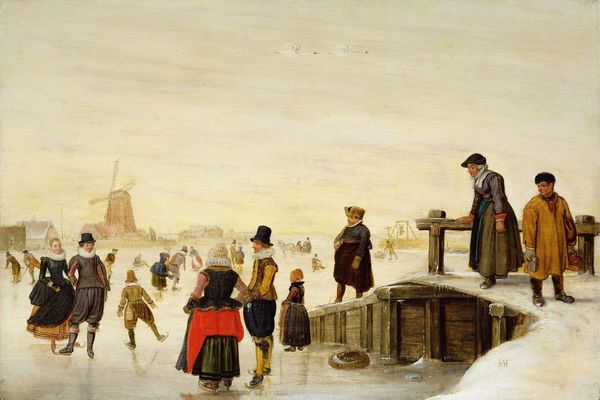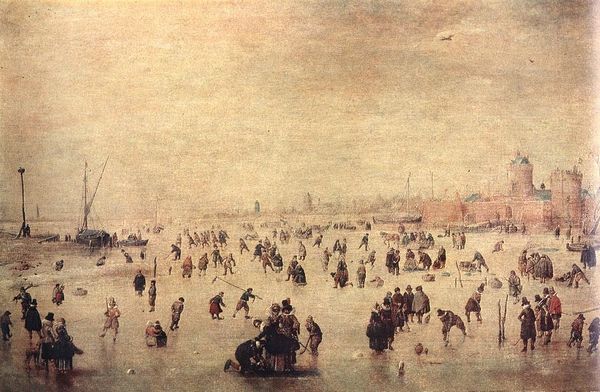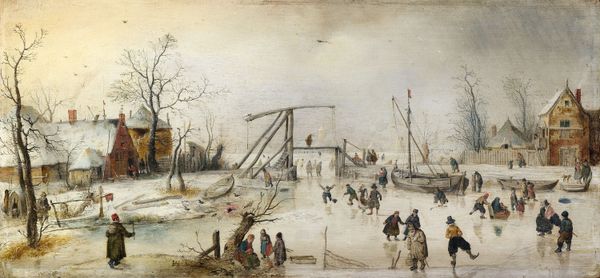
painting, oil-paint
#
baroque
#
dutch-golden-age
#
painting
#
oil-paint
#
landscape
#
oil painting
#
genre-painting
#
realism
Dimensions: 96.6 x 53 cm
Copyright: Public domain
Editor: So, this is Hendrick Avercamp's "Winter Landscape on the River Ijsel near Kampen in the Netherlands," painted in 1615 using oil on panel. It's so detailed! It gives the impression of a bustling town square, except it's all taking place on a frozen river. What draws your attention when you look at this scene? Curator: The frozen river serves almost as a mirror reflecting not only the day-to-day activities of the Dutch Golden Age but also echoes of deeper, primal human impulses. Note how Avercamp uses the visual language of everyday life. Skating, games – these become symbols of both social cohesion and individual expression within a community facing a shared environment. What does the image evoke for you on an emotional level? Editor: It feels very lively and communal. The painting makes winter look like an occasion. I’m thinking about how we isolate ourselves now. Was it really like this? Curator: Avercamp uses winter not just as a backdrop but as a catalyst, a container for all sorts of interactions that bind society. Think of the frozen river as a stage, setting the scene for an almost carnivalesque event where social strata mix in this icy theatre. Can you spot figures from different social classes mingling? Editor: Yes, I see that! Some are well-dressed, and others appear to be laborers. It’s like he’s intentionally bringing them together. What about the windmill? Is there a meaning behind its inclusion? Curator: Indeed. The windmill symbolizes the ingenuity and industriousness of the Dutch people. But it is a powerful presence in the landscape, showing not only their progress but also the relationship between humanity and its environment. What emotional tension do you see there, if any? Editor: That's fascinating! I suppose there's a tension between nature's power to freeze the river and humanity's attempt to control and utilize it and the land for their benefit. I see so much more now, seeing beyond the idyllic scene of the Dutch Golden Age. Curator: And so, art history offers a glimpse into the collective conscious and cultural memory. Seeing an old painting differently by unlocking how symbols can shape history helps see the present clearly.
Comments
No comments
Be the first to comment and join the conversation on the ultimate creative platform.
